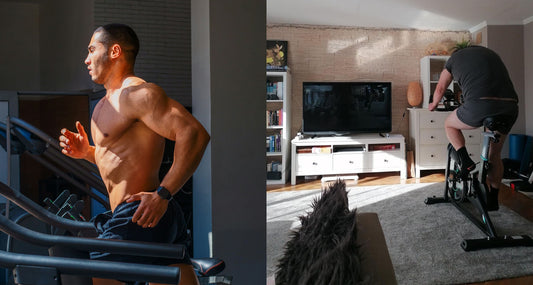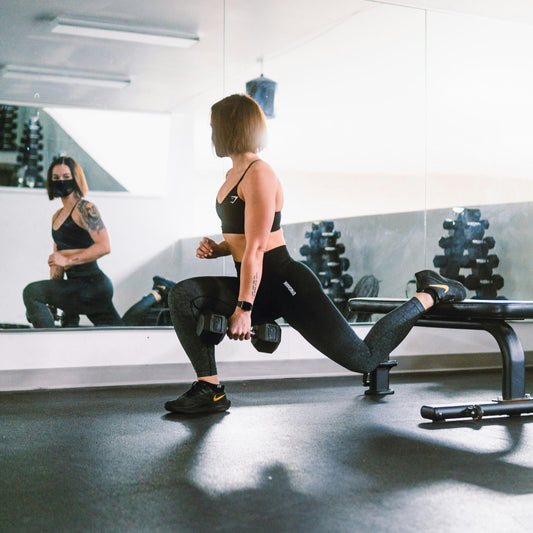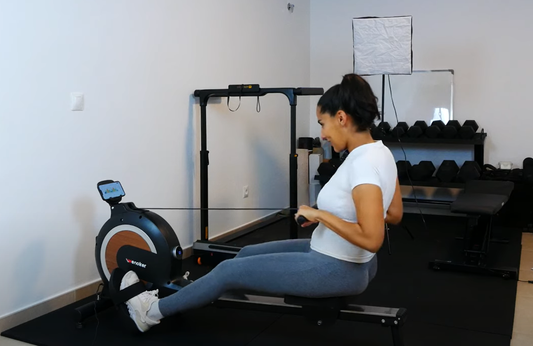Are you looking to increase your power output and endurance on the bike? While cycling itself is essential, incorporating cross-training for cyclists can be the game-changer you need. This comprehensive guide explains why diversifying your workouts is crucial, how it enhances performance, and the best cross-training exercises for cyclists—supported by expert insights and scientific research.
What Is Cross-Training?
Cross-training involves combining different types of exercise to improve overall performance in your primary sport. As noted in fitness authorities like the American Council on Exercise (ACE), this approach builds complementary fitness attributes, reduces overuse injuries, and keeps training engaging. For cyclists, it means integrating activities that strengthen underused muscles, boost cardiovascular capacity, and address cycling-specific limitations.
Take Wenoker's lead coach, Michael Anderson, a veteran fitness coach with over 15 years of experience training endurance athletes. He emphasizes, "Cross-training allows cyclists to develop a more balanced physique. By engaging in activities like strength training or swimming, you not only enhance your power on the bike but also correct muscular imbalances that can lead to injury."
Why Cross-Training Benefits Cyclists
1. Improves Overall Strength and Power Output
Cycling primarily targets the lower body, but strength training for cyclists builds full-body muscle, increasing the force you apply to the pedals. A study cited in the Journal of Strength and Conditioning Research found that cyclists who integrated strength training outperformed those who didn't in time-to-exhaustion tests.
2. Enhances Bone Density and Joint Health
Unlike weight-bearing exercises, cycling does little to improve bone density. Weight-bearing cross-training, such as strength workouts or running, helps maintain bone strength, which is especially important as we age.
3. Boosts Aerobic Capacity and endurance
Activities like swimming and HIIT elevate your VO2 max for cyclists, which is the maximum rate your body can use oxygen during exertion. This translates to sustained power and faster cycling times.
4. Reduces Risk of Overuse Injuries
Repetitive cycling motions can lead to tight hip flexors and weak core muscles. Cross-training for injury prevention introduces varied movements, improving flexibility and supporting muscle groups neglected by cycling.
5. Increases Core Stability
A strong core is essential for efficient power transfer and stability on the bike. Core workouts for cyclists, such as those emphasized in swimming or Pilates, reduce upper body sway during pedaling.

Top Cross-Training Workouts for Cyclists
1. Strength Training
Strength training is the number one cross-training tool for cyclists, according to Coach Anderson. It builds muscle, increases bone density, and improves pedaling efficiency.
- Why it helps cyclists: It enhances muscle endurance for cycling and power output. Research in the Scandinavian Journal of Medicine & Science in Sports showed that resistance training improved cycling economy in competitive athletes.
- Getting started: Incorporate full-body workouts 2-3 times weekly, focusing on squats, deadlifts, and lunges. Use dumbbells or resistance bands, or try the Wenoker Home Gym Series for compact, versatile equipment.
- Keywords: cycling strength workouts, strength training for cyclists, Wenoker strength equipment
2. Swimming
Swimming offers a low-impact, full-body workout that builds cardiovascular endurance and core strength.
- Why it helps cyclists: It lengthens tight hip flexors, improves range of motion, and emphasizes breath control—key for cycling endurance training. The constant core engagement in swimming stabilizes your form on the bike.
- Getting started: Aim for 1-2 sessions weekly, focusing on freestyle or backstroke to engage the core and open the chest.
- Keywords: swimming for cyclists, low-impact cross-training, cycling breathwork
3. Running
Running is an efficient aerobic workout that complements cycling by activating similar leg muscles.
- Why it helps cyclists: It maintains aerobic capacity for cycling and can be a time-saving alternative to long rides. A study in the European Journal of Applied Physiology noted positive transfer effects between running and cycling performance.
- Getting started: Begin with 20-30 minute runs at a moderate pace, or try interval sessions to simulate cycling intensity.
- Keywords: running and cycling, cardio for cyclists, aerobic cross-training
4. High-Intensity Interval Training (HIIT)
HIIT involves short bursts of intense exercise followed by rest, boosting both aerobic and anaerobic fitness.
- Why it helps cyclists: It dramatically improves VO2 max for cyclists, allowing you to pedal harder and longer. The American College of Sports Medicine highlights HIIT’s role in enhancing cardiovascular health and metabolic rate.
- Getting started: Use a Wenoker Exercise Bike for indoor HIIT sessions: 30 seconds of sprinting followed by 60 seconds of rest, repeated 8-10 times.
- Keywords: HIIT for cyclists, VO2 max workouts, Wenoker Exercise Bike routines

How to Incorporate Cross-Training into Your Cycling Routine
- Off-season cross-training: Focus on building overall strength and addressing weaknesses. Coach Anderson recommends, "Dedicate 2-3 days weekly to strength and flexibility work during the off-season to set a strong foundation for the cycling year."
- In-season cross-training: Maintain gains with 1-2 weekly sessions of low-impact activities like swimming or light strength training.
- Listen to your body: Adjust intensity based on fatigue levels to avoid overtraining.
Enhance Your Training with Wenoker Fitness Solutions
To support your cross-training goals, Wenoker offers equipment designed for versatility and performance:
- Wenoker Exercise Bike: Ideal for indoor HIIT and endurance sessions, with adjustable resistance for simulating climbs and sprints.
- Wenoker Home Gym Series: Compact strength stations for full-body workouts, perfect for cyclist strength training.
- Wenoker Yoga Mat: For core work and post-ride stretching.
Conclusion: Cross-Train Smarter, Ride Stronger
Integrating cross-training for cyclists into your routine isn’t just about variety—it’s about building a stronger, more resilient body capable of peak performance. From strength training to HIIT workouts, each activity addresses specific cycling demands while safeguarding against injuries.
As Coach Anderson sums up, "The most successful cyclists are those who embrace a holistic approach to fitness. Cross-training fills the gaps that cycling alone can’t, ensuring you ride longer, stronger, and with greater joy."
Start your cross-training journey today with Wenoker’s premium fitness equipment, and experience the difference in your next ride!








